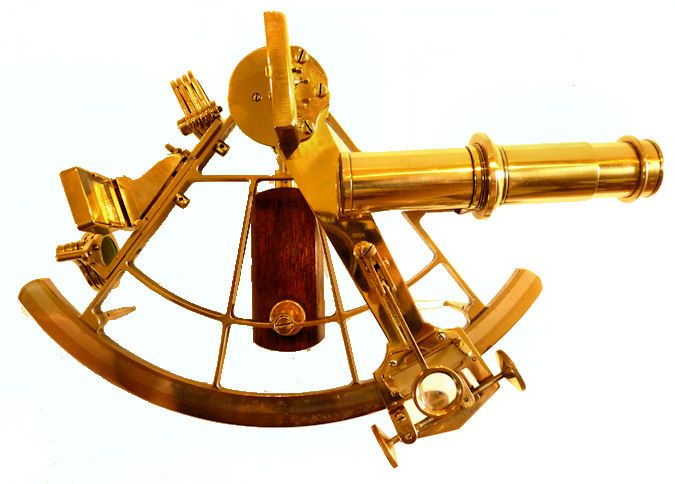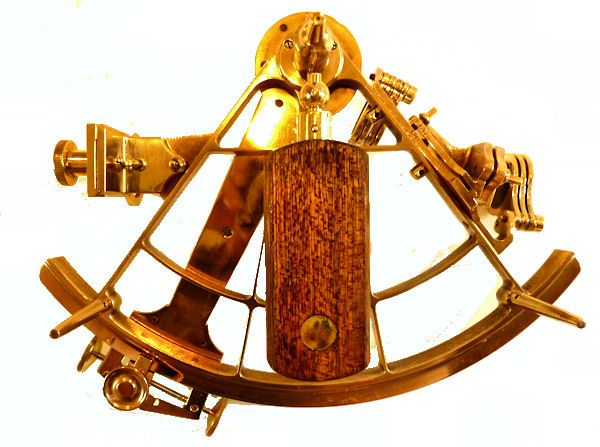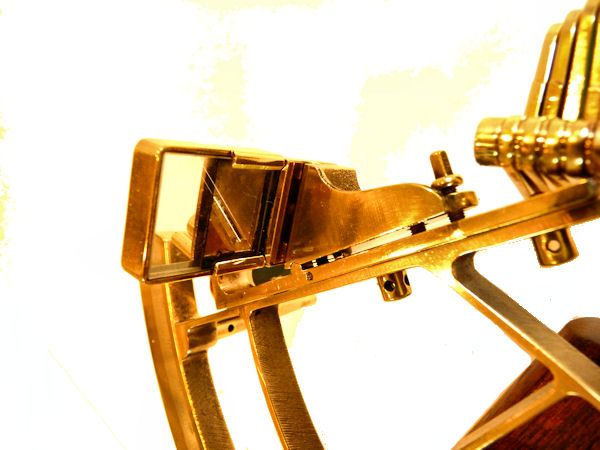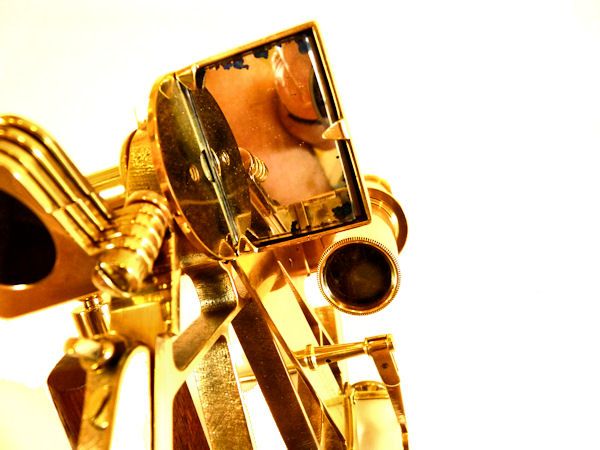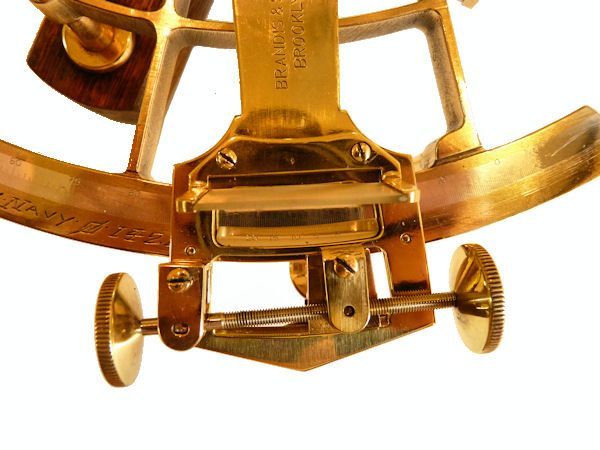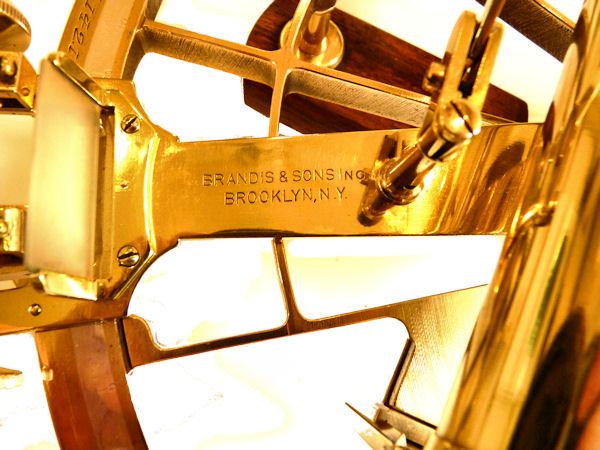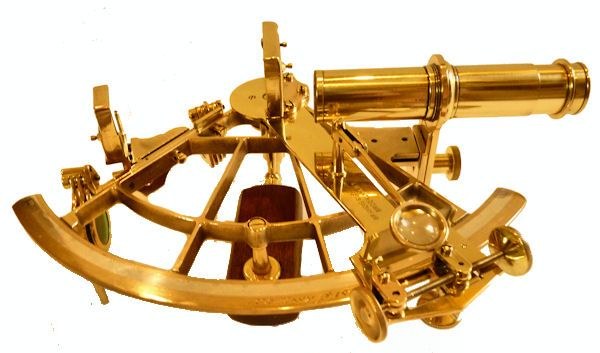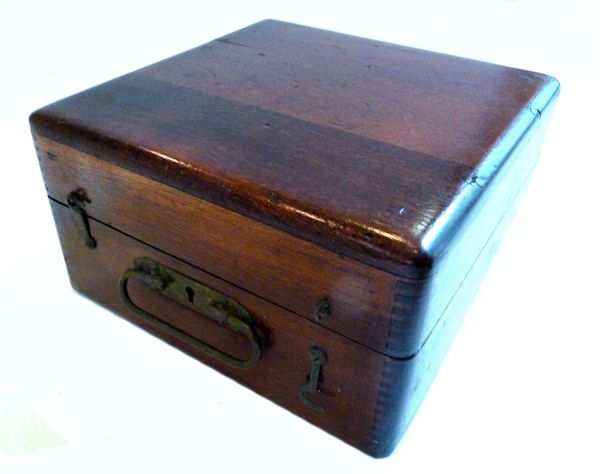NAVY MK I QUINTANT/SEXTANT
WORLD WAR ONE ERA
is a World War One instrument made by Brandis & Sons, Inc., for the U.S. Navy. The Brandis serial number
3331, is stamped at the forward edge of the engraved silver insert on the arc, and U.S. Navy and the Naval
Observatory cartouche and number 1421 signifying that it was tested and passed for use, is engraved by the
hand at the center of the arc.The arc reads to 185° differing from most quintants that traditionally read to 144°. This design
has some common features carried forward to the Navy MK II of World War Two which uses the same style and size horizon mirror
carrier, index mirror holder and the adjustable rising piece that allows the telescopes to be moved towards and away from
the frame. Its compact size and light weight are attractive features. See: https://landandseacollection.com/id718.html The design is for hydrographic survey and marine astro-navigation.
longer scope is of high power which we estimate at 6 to 8 power, and displays an inverted image. It is to be
used for astronomical observations and collimation. The lower powered scope, which likely is 3 1/2 power, displays the
image in an erect position and is best for general all around use.The adjustable
rising piece allows moving the telescope towards or away from the frame making the horizon more distinct under varying light
conditions. The bronze arc has a Silver insert that is
calibrated -5 to +185°; with a vernier that reads from the right, from 0 to 20 arc seconds. The sextant has four index shades
and three horizon shades.
This magnificent instrument will make a rare addition to an important collection
or as a gift of importance recognizing achievement or some important occasion!
or as a gift of importance recognizing achievement or some important occasion!
NOTE: A quintant has a
range of arc of 144° compared to a sextant which reads to 120°. This was helpful in measuring Lunar Distances, which was a
means of determining longitude without a chronometer.
and lacquered. The index mirror has some blackening at its outer perimeter, but not in the viewing surface which is clear
and sharp. The horizon mirror is in very good condition. Both sets of shades (filters) are perfect. There is a mirror
adjustment tool, and screw driver which were not photographed.
THE
CASE: The instrument is housed in a tongue
and groove wood case with the normal marks of use and age, but otherwise is in good, strong condition. There is some
staining in the lids under section. No instrument certificate remains. Some small pieces of balsa wood were later
added as spacers and hold down devices.
in a sturdy wood case with original finish
BRANDIS HISTORY IN BRIEF:
Frederick Ernest Brandis (1845–1916) was born in Germany, came to the United States in 1858, worked for Stackpole &
Brother for a few years, and opened his own instrument shop in 1871. The firm became F. Brandis & Co. in 1875, F. E. Brandis,
Sons & Co. in 1890, and Brandis & Sons, Inc. in 1916. The Pioneer Instrument Company purchased control of the Brandis
firm in 1922, with aviator Brice Goldsborough as one of its vice presidents. It in turn was acquired by the Bendix Aviation
Corporation in 1928. The manufacture of Brandis instruments ceased in 1932. Ref: Charles E. Smart, The Makers of Surveying Instruments in America Since 1700
(Troy, N.Y., 1962), p. 14-15 with additions.
